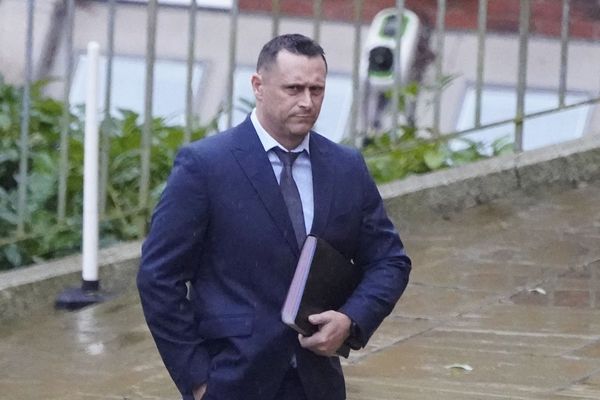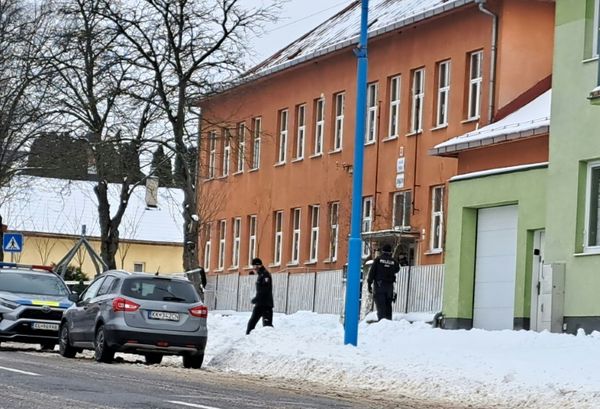
The mass uprising sparked by the viciousness of Belarus’s security services toward protests against an apparently fraudulent presidential election this month caught everyone by surprise. Although the vote, which incumbent President Aleksandr Lukashenko claimed to have won by more than 80 percent, was clearly rigged, the expectation inside Belarus and in the world beyond was that contemporary Europe’s longest-ruling dictator, having dominated Belarus for 26 years, would continue doing so.
Well, not this time. Lukashenko now lives on borrowed time.
The ridiculously huge margin of his victory—can’t despots ever be satisfied with claiming to have won, say, 60 percent of the votes in elections they steal?—and more so the arrest of some 7,000 nonviolent demonstrators, many of whom were badly beaten on the streets and while in detention, created a tsunami of anger.
Indeed, far from cowing the protesters, the regime’s show of force brought even more of them on to the streets. From Minsk, the capital, to smaller cities across the country, even workers at state-owned factories—whom the government had long regarded as loyal—went on strike, booed Lukashenko, and demanded that he depart. Hundreds of employees at the state-run television station Belarus 1 also refused to work until new elections were held and censorship ended. Riot police ditched their crowd control paraphernalia in a gesture of camaraderie with the protesters.
Within days, the seemingly invincible Lukashenko was on political life support.
Not surprisingly, commentators in the West turned their attention to the Kremlin, and speculation began about what Russian President Vladimir Putin might do. Would he come to Lukashenko’s rescue, and if so, how? By sending the so-called little green men who popped up in Ukraine in 2014? Dispatching troops to quell the demonstrations? Arming irregulars? Rattling sabers?
The speculation was not entirely unwarranted. Putin had congratulated Lukashenko on his electoral victory, and once the uprising began, he pledged to defend Belarus against “external pressure.” There’s also the historical precedent; like Ukraine, Belarus adjoins Russia and is a fellow Slavic nation. The Russian military doubtless sees it as a strategic buffer with the West, mindful of how it served as a passageway for Napoleon and Hitler.
More importantly, Putin has been obsessed with Western-inspired color revolutions for the better part of two decades, and he is currently also dealing with huge protests in Khabarovsk, in Russia’s Far East. There’s good reason for him to worry that the Belarusian protesters would, by sheer force of example, inspire—perhaps even mobilize—Russia’s fragmented political opposition.
In short, Putin and his government have a lot at stake in Belarus, which is why some experts have wondered (reasonably) whether Belarus in 2020 would beget a crisis akin to Ukraine in 2014. But this is very unlikely. The circumstances underlying the two uprisings are utterly different.
For starters, the Belarus protesters aren’t driven by a desire to break free of Russian control, which, in any event, the wily Lukashenko proved pretty adept at avoiding. Lukashenko is reviled, no doubt, but not because he is regarded in the country as Moscow’s man, as Ukrainian President Viktor Yanukovych was in 2014.
Nor are the intrepid protesters who have taken to the streets in Belarus animated primarily by dreams of joining the European Union and NATO, and the anti-Russian sentiments evident among some of the groups that were part of the protests on Kyiv’s Maidan have been notably absent on the streets of Minsk. Moreover, because Russian is far more widely used in Belarus than Belarusian—like Russian, Belarusian has the status of an official language, but less than a quarter of the population speaks it day to day—the linguistic and cultural divide between Russia and parts of Ukraine, particularly its western regions, aren’t present either. In short, Putin need not really fear the installation of an anti-Russian regime.
Still, Moscow does have good reason to worry that the ripple effects of the protests in Belarus could reach into Russia. But not only would an intervention not solve that particular problem, it would actually make it worse.
The protests in Belarus are so massive and encompass so many different segments of society that quashing them would require Russia to deploy a substantial amount of force. Hundreds, perhaps thousands, of demonstrators would be killed. A movement that did not originate out of antipathy to Russia would then inevitably acquire an anti-Russian character. And even if Russian forces were to prevail, Belarusian sentiments toward Russia would be forever altered. Future protests wouldn’t be directed against Lukashenko alone but against his imperial benefactor as well. As it has in Ukraine, Moscow’s military intervention would ensure that Belarusian nationalism will come to be defined in no small measure by animus toward Russia. In short, a tactical victory would become a strategic defeat.
There’s also the question of what would follow an intervention. Lukashenko has become unsalvageable. Even if Russia’s use of force were to quell the protests, lasting peace would require his exit, even if after a decent interval. But there’s no ready replacement, because Lukashenko has exercised near total control for 26 years; he hasn’t been one to look kindly upon, let alone cultivate, rising stars or putative successors. Even if a successor were to be trotted out, anyone closely identified with the old regime could never gain even the minimal support needed to calm the political waters. Russia would be required to serve as the guardian of a leader with reed-thin political support—but without the dictatorial instincts or capacity to rule by intimidation a la Lukashenko.
One could argue that such an outcome could suit Putin perfectly and indeed would pave the way for a union between Belarus and Russia, which he has long wanted. But that assumes that Russia’s use of force and slaughter of peaceful demonstrators would actually work, rather than provoke greater resistance.
The unlikeliness of success explains why even the official and regime-aligned media in Russia have not parroted Lukashenko’s line that it’s either him or anarchy or a Western takeover. To the contrary, the demonstrations have received wide coverage, as has the viciousness of the government’s response. As the Carnegie Endowment’s Eugene Rumer has pointed out, the Kremlin has even allowed small demonstrations outside Belarus’s embassy in Moscow—and TASS, the state news agency, reported on the gatherings, noting that they were held for several successive days.
In short, Putin’s is not all-in for Lukashenko—and he hasn’t been for a long while. Witness, for example, his refusal to continue selling Belarus oil at subsidized prices. Lukashenko’s entreaties for Russian intervention haven’t elicited a sympathetic response from the Kremlin, which the Belarusian leader accused (in June and July) of plotting to disrupt the upcoming elections through the use of mercenaries and by conspiring with opposition candidates. He even had 33 Russians, allegedly members of the Wagner Group, a paramilitary outfit with official ties, arrested on charges of planning a terrorist attack on the eve of the election.
If Belarus isn’t Ukraine in 2014, what is it? As Harvard University’s Mark Kramer has observed, the 2018 protests in Armenia, which forced the resignation of the Russia-aligned government of Serzh Sargsyan and the emergence of a successor led by the opposition leader Nikol Pashinyan, might be a better comparison. There, a popular movement sparked by a stolen 2017 election—intended to permit Sargsyan, who served as president from 2008 to 2018, to retain power by becoming prime minister (with additional authorities) in 2018—led to another vote. Pashinyan’s coalition won resoundingly. Not only has Russia retained its close military ties with Armenia since then, it has also deployed newer weapons to its bases at Gyumri and Erebuni.
In Belarus today, as in Armenia in 2017, the uprising isn’t powered by a desire to break with Moscow and align with the West through eventual membership in NATO and the EU. It was produced by outrage over electoral fraud perpetrated, yet again, by a leader who had outstayed his welcome and was willing to beat his people into submission to retain all-encompassing power.
Although some Western experts have warned about a Russian military intervention in Belarus, Russia is much more to hew to the playbook in Armenia two years ago—sitting largely on the sidelines in hopes that whatever government follows, it will be pro-Russian. None of this means that the situation in Belarus isn’t dicey and couldn’t become more so. One way to prevent a national crisis from spiraling into an international one, however, is to maintain communication between Russia on the one hand and NATO and the EU on the other. Eschewing misplaced historical analogies and doomsday scenarios might help, too.







